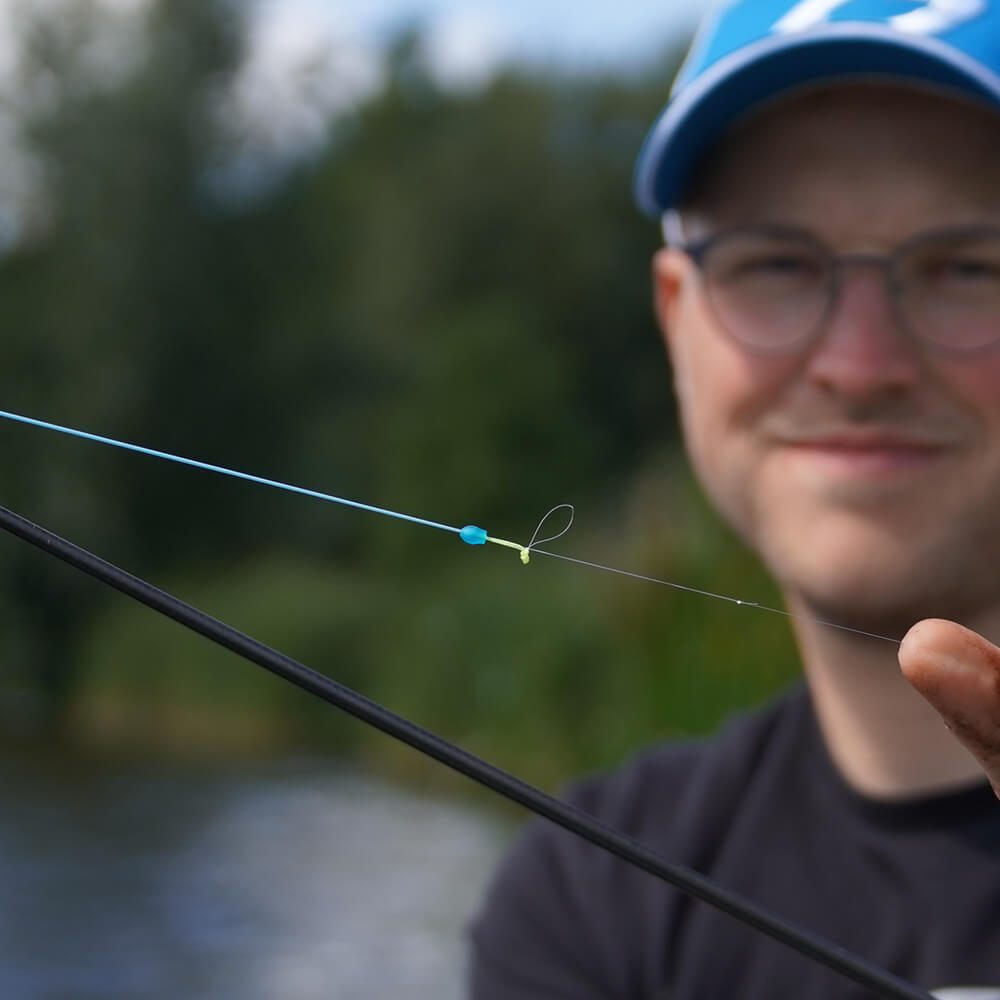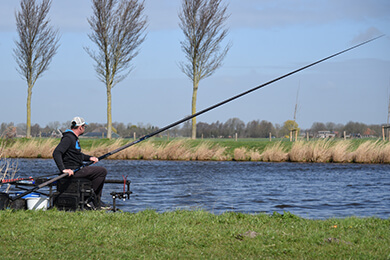
Being prepared or knowing what is going on at a (competition) venue plays an essential role in my fishing. As I often go to a different venue every weekend, a visit to an upcoming venue always leads to new ideas, this time I’m in Vlaardingen.
The Vlaardingse Vaart
This water is known as one of the oldest match venues in Holland and runs right through Vlaardingen. Over the years, the fishing here has been characterised by a lot of smaler fish with the odd big fish. Often in the form of bream, tench and, in recent years, (a large) carrasio can definitely be a possibility, especially on some feeder hotspots. With the exception of the cold winter months, you can always get some action here. There are lots of competitions over here with both pole and feeder. The average depth of around 2 metres and a planted bank make this a beautiful stretch and on many occasions you can catch just a few metres out.
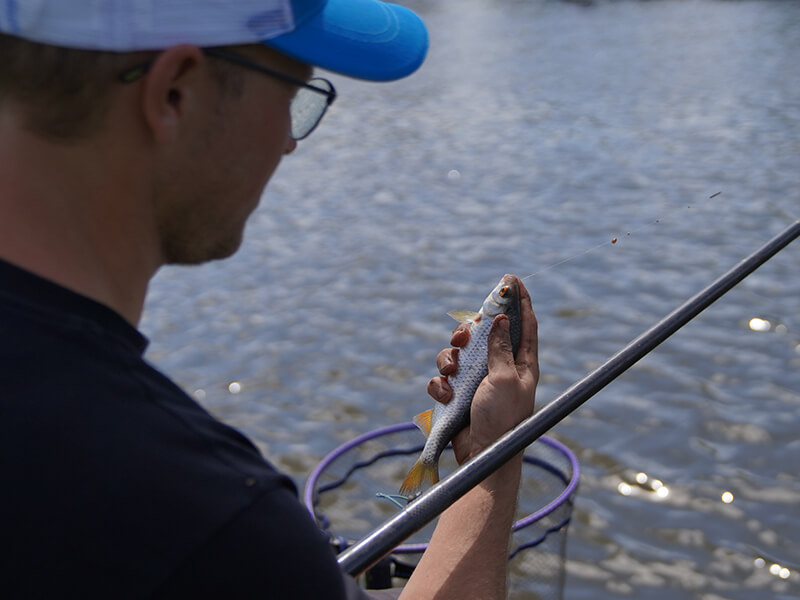
A Decent Stamp
There are a lot of competitions here and also a large group of really good anglers who know this canal well and are hard to beat! I have been fishing here for a number of years now and the general tactic in the rod competitions here is often to catch as many fish as possible and hope for a ‘bonus fish’. A small caveat, of course, is that these fish should add up to a good weight. Say around 6 to 10kg. This means that you have to ‘select’ or, in other words, catch a ‘decent size’ fish. And this is where the challenge lies; catching enough of a decent size and in my opinion, the appropriate lure to achieve this is the Caster. I’ve got a couple of competitions lined up here in the near future, so it’s time to pay the Vaart a visit.
Three Different Lines
Of course, a practice session is not the same as a match, but there are always some things to figure out during such days. For example, how long does it take to get a bite? What is the stamp and type of fish, roach or skimmers? Today, I decided to feed three spots: at 4 sections or 6 meters, at 11.5 meters, and just behind the reeds for perch. On the two spots (6 and 11.5 meters), I divide 10 balls of groundbait containing a good handful of casters and two hands of hemp. I cup these balls about 40 centimetres back from where I place my float when fishing as far as possible (the end of my handle section). This way, I always fish within range of the fed spot and this also allows me to fish behind the swim. Behind the reeds on my left, I found a nice depth on a hard and stony bottom. Here, I fed half a pole cup of coarsely cut worms mixed with some casters. This is ideal for perch, which can sometimes be caught in large numbers and nice sizes.
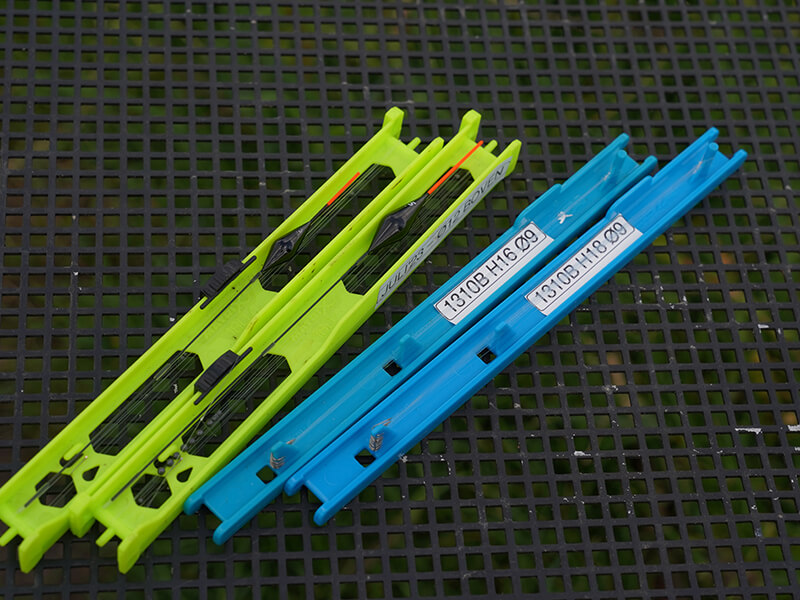
Ripple
The wind across the water, plus a bit of tow to the right, creates a nice ripple on the surface. These are the conditions I normally enjoy for getting a bite. There is also “life” to be seen on the surface, with nice fish showing or turning every now and then. From my tackle drawer (geared for this type of water), I pick a 0.3g and a 0.7g float for the short distance, and a 0.4g and a 0.9g float for my long line. All are made on a 12/00 Intenz power main line. My ground bait and bait are already in by now. In good spirits, I lowered my rig to 11.5 meters. It doesn’t take long, because after a short lift, the antenna goes under and a roach can be lifted. The first fifteen minutes pass normally with some smaller roach and skimmers. After some fishing, it’s time to try a caster, which also leads to bites, although less quickly than with pinkies. Especially the very small roach will not take the caster, and every now and then a nicer roach runs in between. Still, it’s far from super, and too often the bite falls out altogether. Time to take some sections off my pole and give the 6m a try. Pretty soon it becomes clear that the fish just want to be here. The bites are better here, and far from hesitant. Each time, the float “stays” for a few seconds before suddenly disappearing. And each time, I can lift a decent fish. A 1mm Smooth elastic in just one section pole ensures that no fish is getting bumped on the strike, but I’m still able to lift reasonable roaches to keep up the pace.
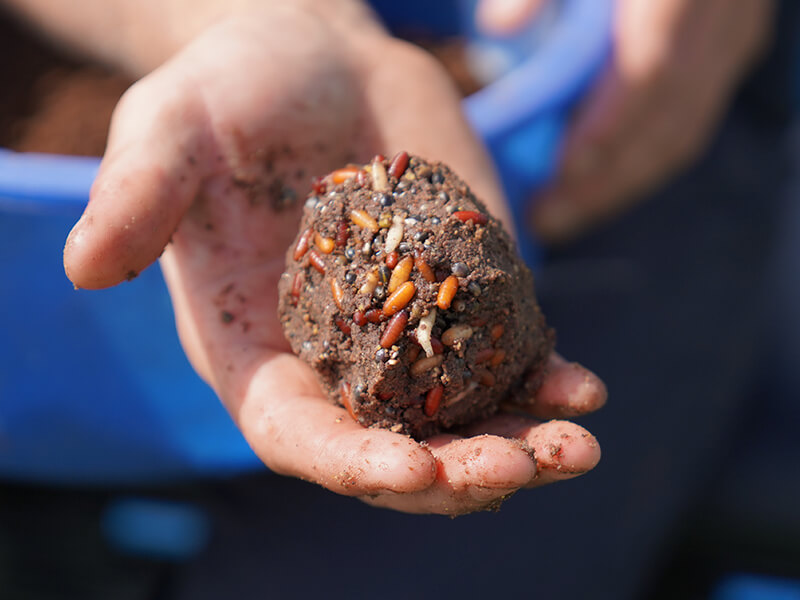
No More Bites..
A couple of nice hours go by until it suddenly goes quiet, where I had just been catching one after the other. It’s over now. Bigger fish in the swim? Pike? I decide to fish the 11.5 meter line again. I’m getting bites here, but certainly not like the previous period on the other line. Also, the stamp is a bit smaller, with more small skimmers in between. While shipping back with a nicer fish, I feel an unwieldy movement on the other side of the rig. Immediately, I know I’ve caught the “killer” of my short swim: a big pike! Which, a moment later (along with the nice roach), also gets away. Both spots took quite a beating during this adventure. And I decide to try my perch swim for the first time. A strong size 14 hook with two pieces of dendro is soon taken, and within half an hour I can catch around 2 kg of perch. My perch rig consists of no-nonsense components such as a 15/00 main line, a 13/00 bottom line, and, as mentioned, a size 14 (1310B) hook. With this rig, I am also able to lift bigger perch, get less tangled, and fish quickly without any damage to the rig.

On The Drop
After fishing for perch, I returned to my trusty 6-meter line and fed casters by hand throughout the day. The peg had slowed down a bit since the pike adventure, but that was to be expected. I replaced my 0.7-gram float with a more subtle 0.4-gram float and moved the bulk of the shot a little further from the hook. I also gently placed the rig upwind so that it would settle slowly. Within seconds, my antenna disappeared and I set the hook into something big. When I catch a decent roach, the elastic stretches out about a meter, but in this case, it stretched out at least 2.5 meters. Another pike? Or something else? After about 5 minutes, it became clear that I had caught a nice bream. I caught a few more roaches and then called it a day. I ended the session with a nice net of roach, silverfish, perch, and bream. This gave me a good idea of what to expect during the upcoming competitions.



